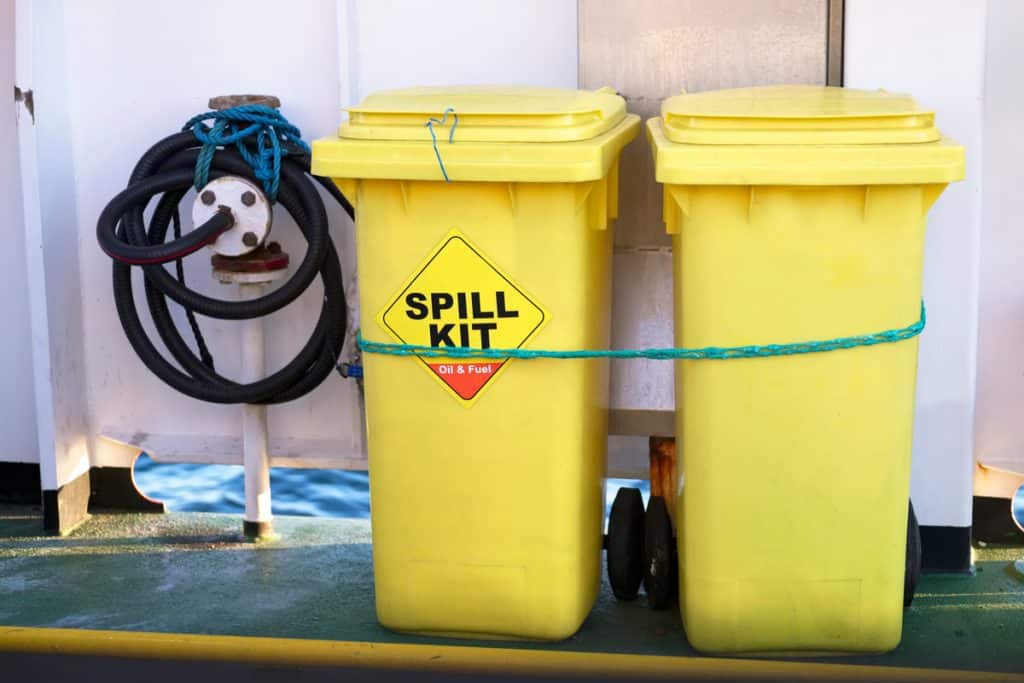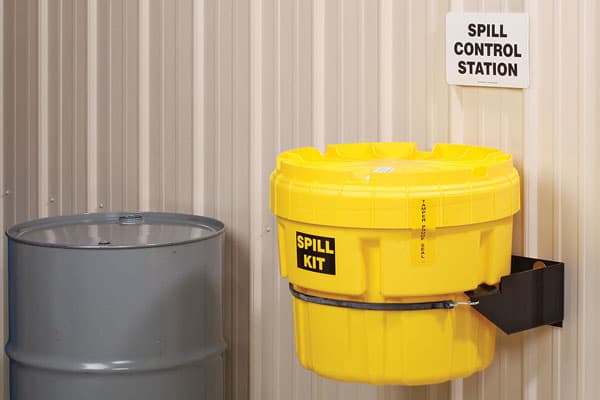Whether you run a bustling automotive shop, manage a lab, or oversee a construction site, spills are an inevitable part of the job. And while you can’t always prevent them, you can be prepared to clean them up quickly, safely, and efficiently. That’s where spill kits come in.
But here’s the thing: not all spills, or spill kits, are created equal. What works in a machine shop might be totally inadequate in a chemical lab. So how do you know which spill kit is right for your industry?
That’s exactly what we’ll explore in this guide. We’ll break down the different types of spill kits, how they’re used in various industries, and what features to look for. By the end, you’ll know exactly what to stock, and where to get it. (Spoiler: Absorbents Online has you covered.)
Why Spill Kits Matter
Before diving into specifics, it’s important to understand why having the right spill kit on hand is so critical.
Spill kits are your first line of defense when dealing with liquid accidents, whether it’s a leaking drum of oil, a chemical splash, or a coffee spill (yes, really). A properly stocked and industry-appropriate kit:
- Minimizes damage to people, property, and the environment
- Keeps your facility compliant with OSHA and EPA regulations
- Reduces operational downtime
- Promotes a culture of workplace safety
In short, it’s an investment in your peace of mind and your bottom line.

Types of Spill Kits
Let’s start with the basics. Spill kits generally fall into three categories:
1. Universal Spill Kits
- Best for: General-purpose use in manufacturing, warehousing, or facilities with mixed liquids
- Absorbs: Water, oils, coolants, and non-aggressive chemicals
- Contents: Typically include gray absorbent pads, socks, and pillows
2. Oil-Only Spill Kits
- Best for: Marine environments, automotive, or anywhere petroleum products are used
- Absorbs: Oil-based liquids while repelling water
- Contents: Usually white absorbents that float on water
3. Hazmat Spill Kits
- Best for: Laboratories, chemical plants, or industries using aggressive liquids
- Absorbs: Acids, caustics, and unknown hazardous substances
- Contents: Yellow absorbents with chemical-resistant PPE
Understanding the differences among these kits is the first step toward making an informed decision.
Matching Spill Kits to Your Industry
Now let’s dig into what matters most: choosing a kit that matches your industry’s specific risks and requirements.
Manufacturing & Warehousing
- Common spills: Oils, coolants, solvents, water-based fluids
- Recommended kit: Universal spill kits
- Key features: High-absorbency materials, large coverage area, portable containers
- Tip: Keep kits at multiple locations: loading docks, workstations, and storage areas
Automotive & Transportation
- Common spills: Gasoline, motor oil, hydraulic fluid
- Recommended kit: Oil-only spill kits
- Key features: Water-repelling absorbents, wheeled kits for mobility, containment socks
- Tip: Choose a kit that can be stored in a vehicle or mounted in a garage bay
Laboratories & Pharmaceuticals
- Common spills: Corrosive acids, chemical reagents
- Recommended kit: Hazmat spill kits
- Key features: Chemical-resistant gloves, goggles, instruction manuals
- Tip: Ensure your staff is trained on hazmat spill response and kit usage
Food Processing & Hospitality
- Common spills: Cleaning agents, oils, water-based liquids
- Recommended kit: Universal spill kits
- Key features: Fast-acting absorbents, easy-to-use PPE, floor signs
- Tip: Select kits with food-safe materials where appropriate
Construction & Industrial Worksites
- Common spills: Fuel, lubricants, hydraulic oils
- Recommended kit: Oil-only or Universal kits (depending on exposure)
- Key features: Rugged containers, outdoor-ready components, large-capacity options
- Tip: Use kits with weatherproof storage for outdoor use
Marine & Offshore
- Common spills: Diesel, oil, fuel on water
- Recommended kit: Oil-only spill kits
- Key features: Floating absorbents, buoyant booms, waterproof bags
- Tip: Regulatory compliance is strict—stock extra kits on each vessel

OSHA Compliance: What You Need to Know
The Occupational Safety and Health Administration (OSHA) requires that employers provide a safe workplace, including adequate spill response equipment. While they don’t mandate specific types of kits, they do expect:
- Appropriate spill control products for the types of hazards present
- Accessible and clearly marked spill kits
- Training for all relevant employees
Failing to meet these expectations can result in fines, injuries, and environmental citations. That’s why choosing the right kit and training your team to use it, isn’t optional. It’s essential.
Features to Look for in a Spill Kit
No matter your industry, a well-designed spill kit should include:
- Absorbents: Pads, socks, and pillows that match your typical spills
- PPE: Gloves, goggles, and coveralls for responder protection
- Disposal bags: For used absorbents and contaminated materials
- Instruction sheets: Clear usage directions, especially for hazmat kits
- Container type: Bucket, duffel bag, wall-mounted station, or wheeled cart
Also, consider portability. Smaller kits can be stored in vehicles or toolboxes, while large drum kits are best for facilities handling bulk liquids.
Why Buy from Absorbents Online?
When it comes to spill preparedness, quality and customization matter. That’s where Absorbents Online shines.
Here’s why businesses across the U.S. trust them for spill containment:
- Industry-specific kits: Options tailored to your workplace needs
- High-quality materials: Durable, absorbent, and compliant
- Wide selection: From small portable kits to full-scale response stations
- Regulatory knowledge: Products designed to meet OSHA and EPA standards
- Competitive pricing: Affordable solutions without compromising safety
Plus, their customer service team is ready to help you choose the right kit—or even build a custom one for your unique environment.
Final Thoughts: Don’t Wait Until It’s Too Late
Spills happen. Whether it’s a minor drip or a major leak, being unprepared can lead to costly, dangerous outcomes.
Choosing the right spill kit isn’t just about checking a compliance box. It’s about protecting your people, your property, and your peace of mind. And with so many options tailored to specific industries, there’s no excuse for being caught off guard.Ready to upgrade your spill preparedness plan?
👉 Shop now at Absorbents Online for top-quality spill kits and containment solutions tailored to your industry’s needs.